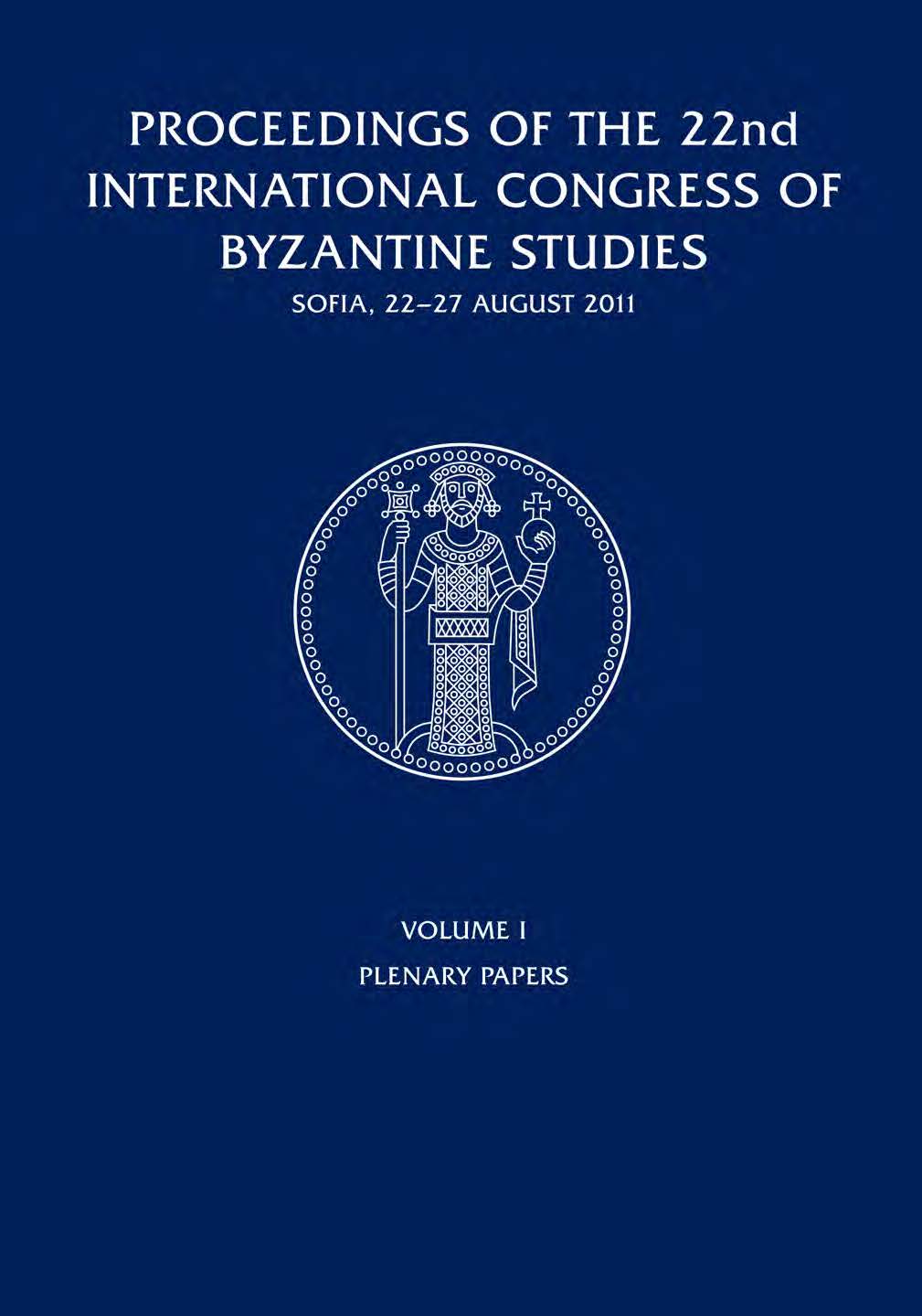

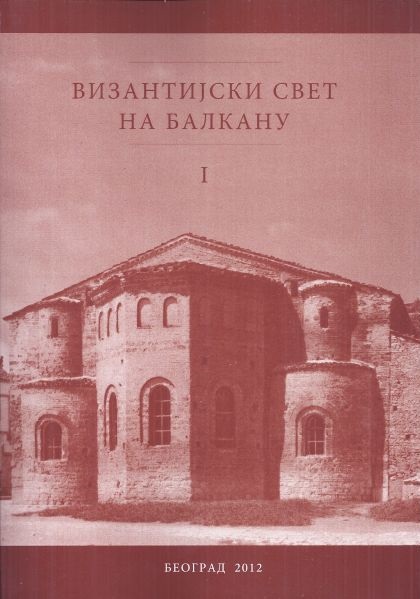
The notion Bulgaria in historical sources survived the end of the First Bulgarian State in 1018. The use of this term in the sources of the 11th and 12th centuries is not related to the adminstrative unit of the theme of Bulgaria, because it exceeds this unit both geographically and chronologically. This term was used by Byzantine, Latin (predominantly crusader) and Slavonic writers of the time to name the territory that stretched from the Rivers Sava and Danube in the North to the northern ranges of the Pindus Mountains in the South, and from the mountains between Ohrid and Durazzo in the West to the mountain gorges east of Sofia, in the East. It also covered a narrow strip of coastline around Valona, on the Ionian Sea. The term was applied consistantly to this same territory, in order to distigiush it from the rest of the Byzantine territory in the Balkans, which was called Romania, or Greece. This territory coincides with the jurisdictional area of the Archbishopric of Ohrid, the official name of which was the Archbishopric of Bulgaria. It preserved the name of the old Bulgarian Empire, with its traditions, for the land and the people under its jurisdiction. This Bulgaria should be treated by historians as a separete geographical and historical entity. It was divided between Serbia and the new Bulgarian state of Trnovo at the end of the 12th century.
More...
Almost simultaneously with becoming the archbishop of Ohrid (Bulgaria) in 1216/1217, as a protege of Theodore Angelos, Demetrios Chomatenos embarked on settling the political relations of the State of Epirus with the neighboring rulers, among whom the archzhupan, and from 1217 king of Serbia, Stephen, was on of the most prominent personalities. Chomatenos' acts bear witness to the intensive communication between the State of Epirus, some of which went through the Archbishopric of Ohrid, and Serbia, conveying some unique information about family ties between the two neighboring regions. Of particular importance are the quality and the fashion of Chomatenos' communication with Stephan Nemanjić and his younger brother Sava, that confirm their complete inclusion in to the Byzantine world of the first decades of the thirteenth century, revealing, at the same time, the strong political role of the archbishop of Ohrid. According to the analysis of Chomatenos' acts, it seems conceivable that Theodore Angelos attempted to pursue a more neutral policy toward Serbia and its ruler in the first years of his rule, until the final agreement with Stephan Nemanjić and the marriage of his daughter Anna with Stephan's heir in 1219/1220. The turnabout in policy toward an alliance with Stephan Nemanjić was not looked upon favorably by all bishops of Chomatenos' diocese (act 3), and Chomatenos might have personally shared the views of some opponents of Theodore Angelos' new policy, since his authority was challenged and strongly undermined with the recognition of the Serbian autocephalous church that Sava obtained from Nicaea in 1218/1219.
More...
The church of Saint Sophia in Ohrid was built by Archbishop Leo (1037–1056), “the first of the Greek” since the founding of the Archbishopric of Ohrid (1019), on the site of an older church. On the model of the cathedral church of the Patriarchate of Constantinople, he dedicated the church to St. Sophia, and its chapels to the Forty Martyrs of Sebaste, Saint John the Baptist and the Holy Apostles, whose relics are kept in their Constantinople church. No doubt, the painters were brought from the capital, as well; certain scenes distinctive of Constantinople art were also painted in St. Sophia, again probably by the intervention of Archbishop Leo. His imprint is most perceptible in the decoration of the sanctuary. Certain dogmatic-liturgical themes are presented there, whose iconography coincides for the most part with Leo’s viewpoints expressed between 1052 and 1054 in his epistles addressed to Bishop John of Trani, and also the entire Western clergy including the Pope. In his polemic with the West, the Archbishop of Ohrid drew mostly from the Pauline epistles and argued that leavened bread was the only true body of Christ, and as such needed to be used in the Eucharist. There is, therefore, very little doubt why the Eucharist should be painted in the apse of the church in Ohrid instead of the Communion of Apostles. This image contains subtle iconographic meanings, very closely related to the theological discussions of the time. Two scenes from the north wall are also connected to the Communion of Apostles: the Vision and the First Service of Saint Basil, depicting the origin of Byzantine liturgy. It stems from Christ and the Apostles, for it was Christ who inspired St. Basil to compose his Liturgy, which Basil himself served in the sanctuary immediately thereafter. It was probably Leo again who had the eminent Greek hierarchs gathered around St. Basil and St. John Chrysostom painted in the apse, along with several scenes from the Old Testament prefiguring the Incarnation and the New Testament service. There is no doubt that Archbishop Leo is to be further accredited with the representations of the great number of holy bishops and with their order. They served to assert the primacy of the Patriarchate of Constantinople which constituted the center of all the local Orthodox churches. This ideal image of Christian ecumenism also included the Western Church, which was represented by the images of Roman Popes honored by the Byzantine world. Furthermore, Leo accounted for the origin of his Archbishopric by the portraits of the popes Innocent and Vigilius who recognized the autocephaly of the Vicariate of Thessaloniki and Justiniana Prima, Church organisations preceding first the Bulgarian, and then the Archbishopric of Ohrid. The Bulgarian Church — the second component which led to the creation of the autocephaly of the Archbishopric of Ohrid — was presented in the Ohrid fresco-painting by the images of SS. Cyril and Clement, whereas the constitution of the Archbishopric of Ohrid was represented by the portrait of Patriarch Eusthatius (1019–1025), during whose time the Archbishopric was established. Taking all of this into account, one should regard Archbishop Leo as the real creator of the fresco programme in St. Sophia in Ohrid: he authorized it, but also propagated certain themes which he found particularly important. Those were associated with liturgy, the issue of communion bread, the relationship between the Patriarchate of Constantinople and Rome, as well as with the autocephaly of the Archbishopric of Ohrid. The frescoes are permeated with references to the events at the time of the Great Schism, in which Archbishop Leo played one of the most important roles. Today, without the historical context it would be hard to understand the frescoes in Ohrid and their iconography. Therefore, the frescoes should be dated between the years 1052, the start of the polemic with Rome and 1056, the passing of Archbishop Leo. In his cathedral church, he not only created a first-rate work of art, but also an artwork which marks the threshold of a new era in Byzantine art after 1054.
More...


The sakkos of ecclesiastical dignitaries is festive attire of a rectangular cut, joined at the sides, with very short sleeves. Previous researchers have pointed out that only three Byzantine writers wrote about it. They were Theodore Balsamon, chartophylax of St. Sophia in Constantinople and the Patriarch of Antioch (second half of the 12th century), Ohrid Archbishop Demetrios Chomatenos (first half of the 13th century) and Archbishop Symeon of Thessaloniki (first decades of the 15th century). There is no preserved written source that would testify which Serbian church dignitaries wore the sakkos and when they received the right to wear it. The only sources on the use of the sakkos in the Serbian Church are the preserved representations of its highest dignitaries. St. Sava of Serbia and his successors — archbishops and later, patriarchs — were depicted wearing the sakkos. The oldest paintings date back to the reign of King Milutin (Figs. 1–2). Some time later, in 1334, the ancient city of Ohrid was included in the Serbian state. Its archbishops enjoyed the right assigned to them much earlier, to wear the sakkos, and they retained that right. So in the Serbian Church, the sakkos was worn by the archbishops and later patriarchs, and the Ohrid archbishops, as well. The oldest preserved pictures of the Serbian archbishops clad in the sakkos are the representation of St. Sava of Serbia in the narthex of the Virgin Ljevi{ka church (Fig. 1), decorated between 1307 and 1313, and the portrait of Archbishop Sava III in the illustration of the Christmas sticheron in the passage that leads to the narthex in @i~a (Fig. 2), painted between 1309 and 1316. That means that awarding the right to wear the sakkos occurred in 1313, at the latest. It certainly was not only a religious but also a political gesture. Byzantine state policy toward Serbia and probably church policy as well, significantly changed for the better during the reigns of Emperor Andronicus II and King Milutin. That created fertile ground, enabling the Serbian church dignitaries to receive the honor to wear the most festive ecclesiastical vestments. The Byzantine emperor, apparently, could have had a major influence on the process of bringing such a decision. However, the question arises as to which patriarch of Constantinople granted this right to the Serbian archbishops. At the beginning of the 14th century, the ecumenical patriarchs were John XII Cosmas (January 1, 1294 to June 21, 1303), Athanasius I (second time, from June 23, 1303 to September 1309) and Niphon I (May 9, 1310 to April 11, 1314). At that time, the throne of the Serbian archbishops was occupied by Eustatius II (1292–1309) and Sava III (1309–1316). Very little is known about these Serbian archbishops. On the other hand, there are numerous sources about the Church's policies and attitudes of the mentioned Constantinople patriarchs. Eustatius II could have received the right to wear the sakkos from John XII Cosmas or Athanasios I. For a long time, the former was fiercely opposed to the marriage of the Serbian king and the daughter of the Byzantine emperor. The latter maintained a very strict attitude. He left data on almost all of his moves in numerous letters, in which such a decision is not mentioned. Therefore, the probability that the first Serbian archbishop who received the sakkos was Eustatius II is negligible. Sava III could have obtained that right from Niphon I. That patriarch, along with an inclination for the easy life, pursued a conciliatory policy and pragmatism. So it is possible that, on the initiative of the emperor, he made the decision that the successors to the throne of St. Sava of Serbia should have the right to wear the sakkos. If this assumption is correct, then the Serbian archbishops received the honor to wear the most festive ecclesiastical garments after the appointment of Niphon I to the throne of the Constantinople patriarchs, which was performed on May 9, 1310. Anyway, this occurred after many changes in the political relations between the Byzantine and the Serbian state during the reigns of Emperor Andronicus II and King Milutin. In those crucial years the Serbian Church advanced from an organization whose canonical foundation was denied at the time of Michael VIII Palaeologos, to the archbishopric whose leaders received the right to wear the festive sakkos, like those worn by the ecumenical patriarchs at the time of Andronicus II.
More...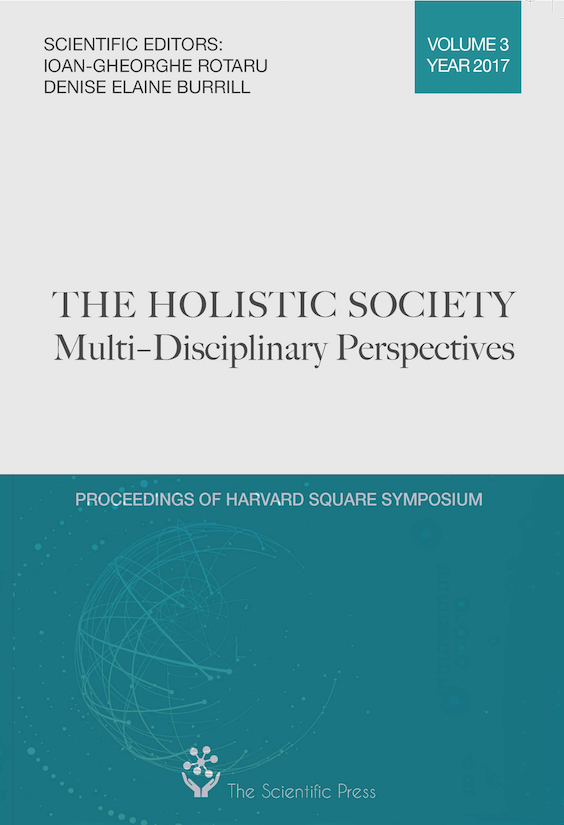
Keywords: Church; teaching; knowledge of God; Gospel; society development;
‘Love for God’ and ‘love for all men,’ which include ‘the whole law and the prophets,’ are constantly preached by the Christian Church. From its beginnings, the Church has contributed permanently to society by promoting a relationship based on love between people and nations, taught the people to live a disciplined life, guided them to the knowledge of God and His edification, to science, to culture, diligence, and other biblical values essential to human life. Therefore, this paper is meant as a reassessment of these values in the contemporary context. KEY WORDS: Church, teaching, knowledge of God, Gospel, society development
More...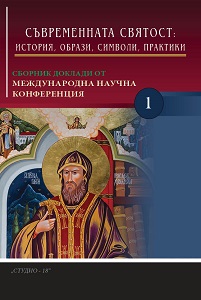
Keywords: Philippopolis; donatio; investitura; polychrome mosaic; Constantius II
Is it plausible hypothesis that the geometric ornaments of the first level of the polychrome mosaic resemble the Roman custom of proclaiming a ruler, empowering with imperial power, which symbolically happened by raising on a shield? The article is an attempt to explain the meaning of the symbols on the mosaics at the Episcopal basilica of ancient Philippopolis, a locus where some of the sessions of the semi-Arian council in 343 A.D. took place.
More...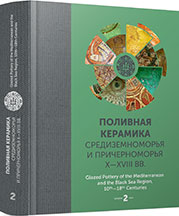
Keywords: Italy; Cosenza; Calabria; Middle Ages; polychrome glazed ware; medieval monastery
The paper presented focuses on a small percentage of ceramics, polychrome glazed ware, from the Middle Ages coming from the excavations at the monastery of St. Francis of Assisi, in Cosenza (Calabria, Italy). It concerned unpublished data on a medieval context, almost unknown that enrich the regional panorama on circulation and production of these artifacts. The quantified materials come from modern stratigraphy, so it is not possible any reflection on every kind of chronological evolution of the typology. However, the autopsy study of the mixtures, the description of shapes and decorations enhances the current knowledge on the subject and in any event allows the first important reflections of a medieval city like Cosenza, that seems to project more toward markets Puglia and Campania, with also the presence of Islamic imported ceramics.
More...
Keywords: Second Bulgarian kingdom; Tsarеvets; Trapezitsa; stone-paste (Qashan) ceramics; trade; Golden Horde; Mamlūk Egypt
This study if focused on pieces of the so called stone-paste (Qashan) ceramics, found during archaeological excavations on the two citadels in the capital of the Second Bulgarian kingdom. Most of the findings are shards that come from the Southern part of Trapezitsa. There is also a restored bowl found at area 14 at Tsarvets. Their context is dated to the 13th—14th century. Not numerous artifacts of this kind, among the ceramic assemblage in this context, as stone-paste ware, Celadon ware and Western majolica ware, show that import of decorated luxory ceramic wares to the Bulgarian capital was limited.The examples of stone-paste wares presented here were made at important production centres of the Golden Horde ion the Lower Volga region and at the workshops of Mamluk Egypt. These evidences of distant trade connections are exotic exceptions among the art ware ceramic assemblage of medieval Tarnovo.
More...
Keywords: South-Eastern Crimea; Possidima; byzantine glazed pottery; Golden Horde period; local production of glazed pottery; maps-portolans; historical geography
This article focuses on the complete publication of available to the author pottery materials obtained in the archaeological research on a medieval settlement Posidima in South-Eastern Crimea. Based on written, archaeological and cartographic evidences, the authors offers anattribution of this settlement. Ceramic materials date the studied cultural layers to the last quarter of the 13th — the first quarter of the 14th centuries. The important role of the pottery complex of Possidima is determined by the fact that it clearly illustrates how the Byzantine ceramic complex was replaced by another one, the Golden Horde pottery assemblage, on the turn of the 13th — 14th centuries.
More...
Keywords: Golden Horde; Azak; 14th century; Iran; Qashan pottery; lustre-ware; cobalt blue painting; floral and geometrical ornament; rice-grain-like decor
The article contains data about three Qashan bowls excavated in Golden Horde city of Azak. These bowls are characterized by good preservation and are dated by the second half of the fourteenth century. Among them: luster painted bowl, cobalt-blue painted bowl, bowl with a rice-grain-like décor and cobalt blue painting. Vessels contain ornaments created by Iranian potters, with the influence of Chinese textile and toreutics. Pottery, produced in Iran with the same technology of decoration is known among the materials of several Golden Horde and foreign cities. Luster painted bowls are the first example of such a kind of pottery that originates from a complex dated by the 2nd half of the 14th century. Cobalt-blue painted bowl, bowl with rice-grain-like décor and cobalt blue painting is the most well-preserved sample of such bowls, ever excavated in Azak.
More...
Keywords: Lower Volga area; Astrakhan Oblast; Golden Horde period; Selitrennoye hillfort; kilns; glazed pottery; Qashan pottery; pseudo-celadon
The article offers findings of a study on a large aristocratic estate from Saray, a Golden Horde capital (Selitrennoe hillfort) excavated by the Volga Archaeological Expedition of the Archaeology Institute, Russian Academy of Sciences, in 1978—1982. It is the first publication of a potter’s workshop found within the estate: it produced various ceremonial red-clay and Qashan ware. The authors characterize thermotechnical devices (kilns) excavated on the territory of the workshop. The analysis of the uncovered ceramic materials (spoilage, furnace stores, and various devices for baking glazed vessels) distinguishes kilns for manufacturing of pseudo-celadon — a local imitation of the Chinese celadon technology.
More...
Keywords: Middle Irtysh region; 17th — first half of the 18th century; Russian settlements; Chinese porcelain; trade relations
The process of accession of Western Siberia to the Russian state had begun in the end of the 16th century. Russian pioneers were looking for opportunities and ways of communication, both with natives, and with the population of the territories, adjacent to Western Siberia because of the conditions of the new cultural environment and constant military danger. This enabled commercial relations and cultural exchange. Among all range of imported goods the significant place was taken by the things which emphasized the social status and welfare of their owners. Chinese porcelain which was widely spread in the region despite its high price can serve a good example of such prestigious things. It was imported into the territory of Central Irtysh region tduring the mid 17th — first half of the 18th centuries, which can be confirmed by materials of archaeological research.
More...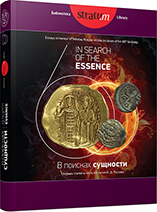
Ad gloriam
More...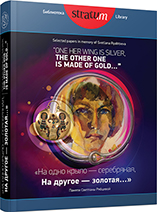
Keywords: Byzantium; Old Rus; silver frames; icons; procession crosses
Fragments of plates of silver frames of liturgical objects with minted floral ornaments were found in the collection of archaeological materials stored in the State Hermitage Museum and among those originating from the excavations of the Large fortified settlement near Shepetоvka (second half of the 12th — first half of the 13th centuries). They differed stylistically and used to decorate once different objects. It was possible to reconstruct a large procession cross with a lush floral ornament and distinguish two crowns from the decoration of an icon, executed less luxuriantly, possibly by another master. The design and stylistic features of the cross find parallels among the Byzantine procession crosses of the 11th—12th centuries, covered with silver frames. At the same time, the reconstructed cross has significant differences, which allows it to be attributed to the first similar works of the ancient Russian masters of the 12th century (?) who followed Byzantine tradition.
More...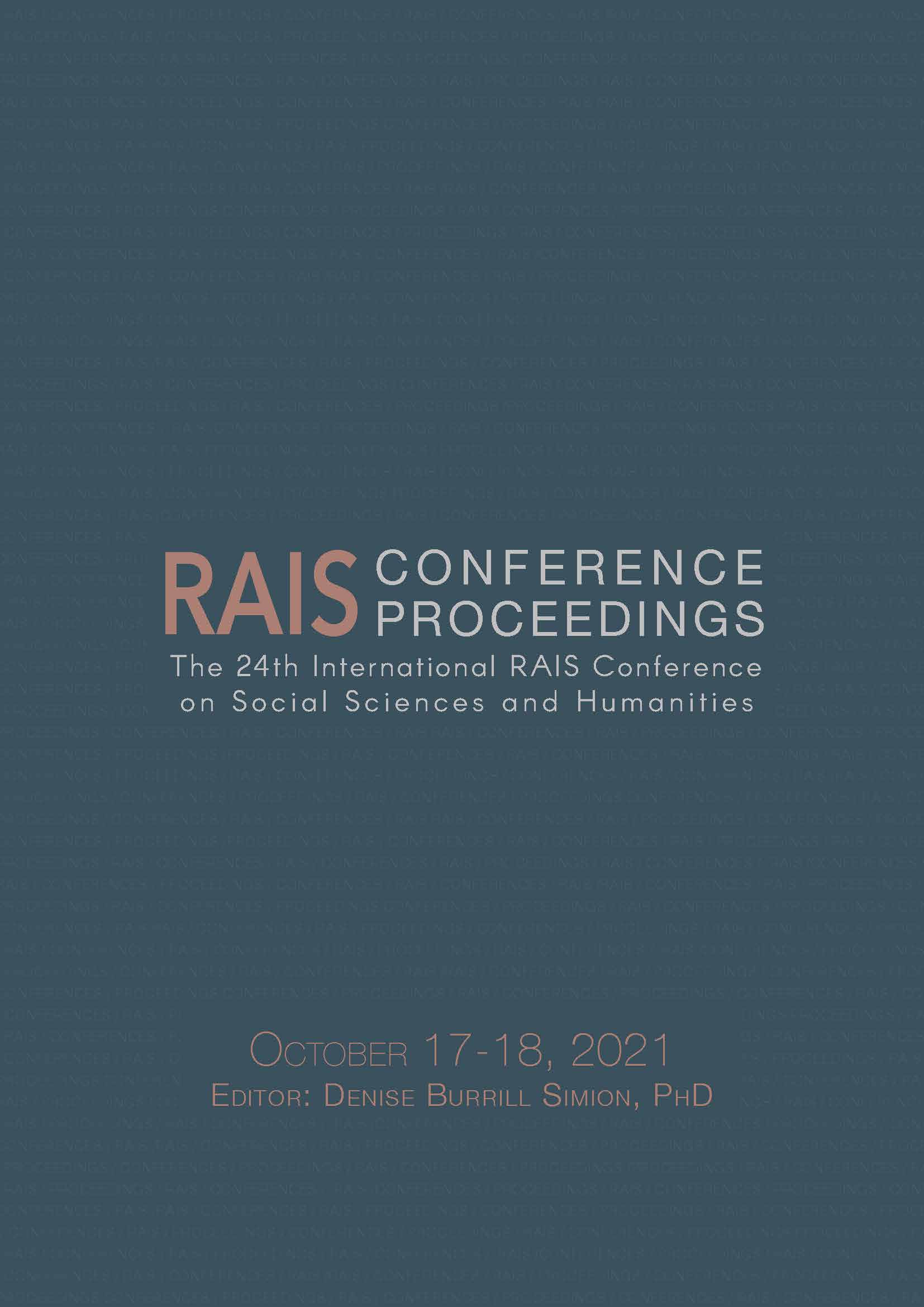
Keywords: St. Basil the Great; Basiliad; social communication; social processes
It is well known that communication is a “social phenomenon, which involves an intention to send and receive a message” (Fârte 2004), in our case, the social communication to Saint Basil. The complexity of the social communication phenomenon is remarkable. It is a proof of human capacity to express their thoughts, ideas, and feelings of frustration, compassion, and struggle for social survival. With the help of words, man struggles every day, with the social problems he faces, with the depression generated by social problems, he transcends the difference of age, language, culture, color, religion and sex. The dimension of communication in social processes becomes “sine qua non” in our existence (Stoica-Marcu 2013, 128) a remarkable example over time is Basiliad. Saint Basil exhortations into practice the mercy of his sermons social facts confirming the strength of his Christian beliefs (Petcu 2009).
More...
Keywords: Blockchain technology; cybersecurity; confidentiality; bitcoin;
In this paper we aim to analyse the impact of Blockchain technology in the current context of cyber-security, especially in the area of smart cities and financial transactions. For this, we will first describe the current state of cyber-security and the problems it faces. Because blockchain technology only addresses part of the cyber-security matters, we will explain the response of this technology to each of the domain-specific issues. It is equally well-known that blockchain technology is the basis of many current applications (Bitcoin, Ethereum, Hyperledger Fabric). For smart cities, blockchain technology is used in designing cybersecurity for traffic control, financial transaction between organisation and authorities and so on.
More...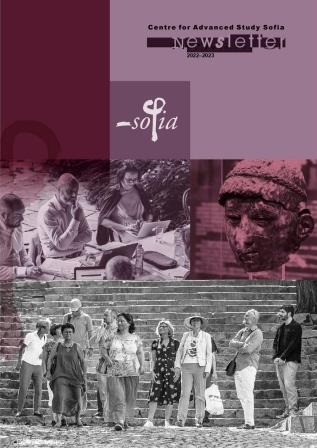
Articles, pictures and interviews can be reprinted only with the consent of the publisher.
More...